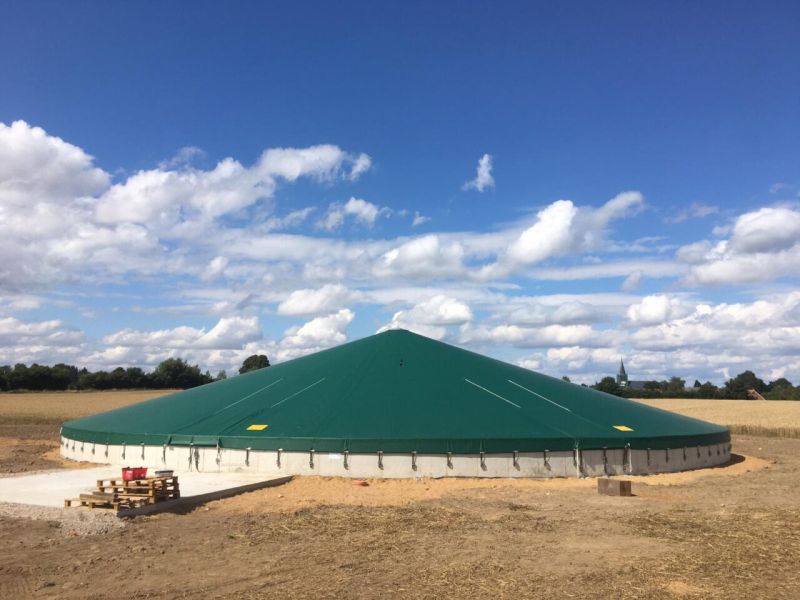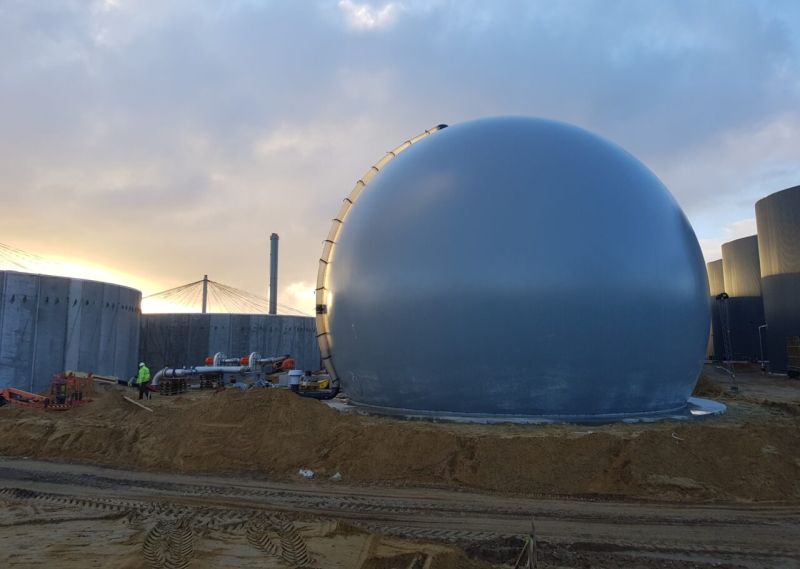For many people in developing countries, biogas is a vital energy source. Biogas is a safer and more dependable alternative to main grid power in locations where it is unavailable or unreliable. The traditional wood collection is the most common method of obtaining fuel, but it is both harmful to the environment and time-intensive for those who collect it. Biogas is taking over the conventional use in households too.
Why Is Biogas Storage Necessary?
The efficiency and safety of a biogas plant are greatly influenced by choice of a suitable biogas storage system. Storage for later on-site use and storage before and after transit to off-site distribution stations are the two main reasons for storing biogas. A biogas storage system also adjusts for variations in biogas output and consumption and volume changes caused by temperature.
What are Biogas Domes?
If you’re thinking about starting your biogas fuel startup and are new to the science of biogas, then you have already heard of biogas domes.
Let’s discuss in detail what biogas domes are and their significance.
A biogas dome comprises a digester and a non-movable, stationary gas holder that sits on top of it. The slurry is moved into the compensating tank when gas production begins. A biogas dome is quite inexpensive. It’s simple since there are no moving components.
There are no rusting steel elements; thus, the plant should last for a long time (20 years or more). The plant is built underground, protecting it from harm and saving space.
Merits of Biogas Dome
- Low starting expenses with the extended life cycle, no moving or rusting components.
- The basic design is small, saves space, and is well insulated; the building provides local jobs.
- The absence of moving components and rusting steel elements and the comparatively inexpensive construction costs are all advantages.
- Fixed dome plants may live for a long time if built properly.
- The digester is protected from temperature variations and saves space by being built below.
- The building project will provide jobs for qualified workers in the area.
Demerits of Biogas Dome
Despite the popularity of the biogas dome, let’s take a look at some downsides of the biogas dome.
- Gas leaks are common.
- Fluctuating gas pressure complicates gas utilization.
- The amount of gas produced is not immediately visible.
- Plant operation is not readily understandable; fixed dome plants require precise level planning; bedrock excavating can be difficult and expensive.
- The common issues with the gas-tightness of the brickwork gas holder are the primary disadvantages.
- Fixed-dome plants should only be used when competent biogas professionals oversee the building. Depending on the volume of the stored gas, the gas pressure varies significantly.
Why are Biogas Domes preferred in the market?

Gas storage systems are under a lot of stress. Gas-tightness, service life and environmental considerations are all important. The domes’ construction is frequently complicated. As a result, the Biogas dome’s materials are simple to produce, have good kink resistance, fulfill various mechanical criteria, and are chemically stable.
Choose Your Storage System
Apart from biogas domes, there are several storage systems you can choose from, like double membrane and air system double-membrane cover. The choice is completely yours.
If you wanna know more about storage systems for biogas and want to get one, then the Biogas membrane is your stop.
The biogas membrane is a symbol of excellence. Biogas membrane can always generate top-quality welded seams thanks to the use of specifically built gear. The welded seams’ strength demonstrates the high quality that both you and us anticipate from the finished product.
Contact them now to get a quote.
Article Submitted By Community Writer




